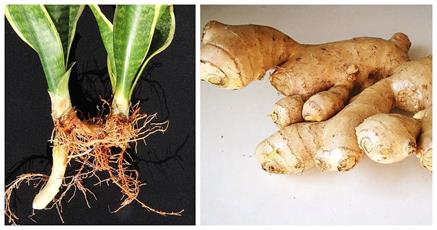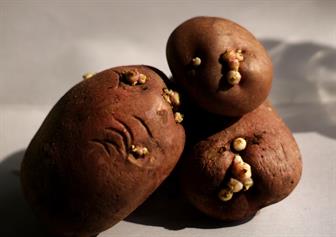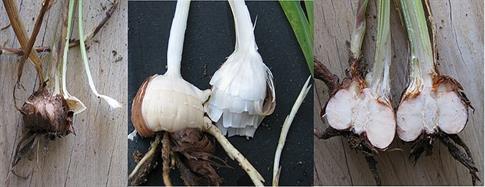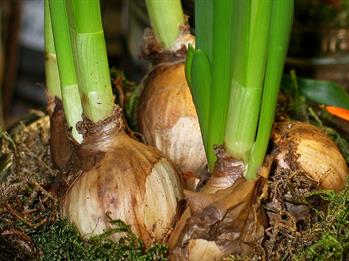
PUMPA - SMART LEARNING
எங்கள் ஆசிரியர்களுடன் 1-ஆன்-1 ஆலோசனை நேரத்தைப் பெறுங்கள். டாப்பர் ஆவதற்கு நாங்கள் பயிற்சி அளிப்போம்
Book Free DemoSimilar to roots shoots also undergo modifications for storing food material and propagation. These modifications aid in the vegetative propagation of new plants.
Based on their locations, stems can be categorized as underground stems, aerial stems and sub-aerial stems.
Based on their locations, stems can be categorized as underground stems, aerial stems and sub-aerial stems.
Underground stems and it's types:
These are the stem tissues that are found inside the soil. There are four major types of underground stems that serve as important means of vegetative propagation. They are as follows:
- Rhizome
- Tuber
- Corm
- Bulb
1. Rhizomes:
- These are major underground stems which store food in the form of starch and proteins for perennation during unfavourable conditions.
- They are characterized by stems with nodes, short internodes and leaves that are reduced to scales.
- They have adventitious roots and buds at nodes that form new aerial shoots during unfavourable conditions.
- The stems of these plants are also known as creeping rootstocks or rootstocks.
- It is seen in plants such as ginger, turmeric, bamboo, banana, Aspidium, Adiantum and sugarcane.

Rhizome
2. Stem tubers:
- They are different from root tubers and comprises all the parts of a normal stem, such as nodes and internodes.
- Their nodes are known as eyes, and each of them consists of a leaf scar.
- When these eyes fall or are placed on the ground, they develop adventitious roots and grow into a new plant.
- It is seen in plants such as potatoes, Dahlia, Artichoke and Asparagus.

Stem tuber of potato
3. Corms:
- These are unbranched swollen underground stems with one or more nodes and internodes.
- Adventitious roots develop from their base, and new shoots develop from the buds on the top.
- These are seen in plants such as Colocasia, yam, Amorphophallus, Crocus and Fressia.

Corm of Crocus
4. Bulbs:
- These are short stems with fleshy leaves as storage organs of food.
- They are covered by dry, scaly leaves.
- Bulbs have more than one bud where the apical bud is surrounded by the lateral bud.
- The lateral buds give rise to new shoots, and the apical bud gives rise to leaves and flowers.
- It is seen in plants such as onion, garlic, lily and Narcissus.

Bulb of onion
Reference:
https://commons.wikimedia.org/wiki/File:S_trifasciata_Rhizome.JPG
https://commons.wikimedia.org/wiki/File:Ginger_rhizome.jpg
https://commons.wikimedia.org/wiki/File:Corms_of_Crocosmia,_entire,_partly_peeled,_and_split.jpg